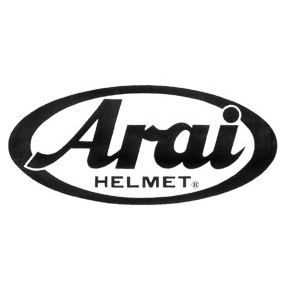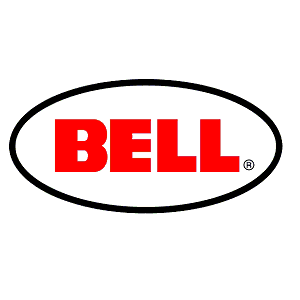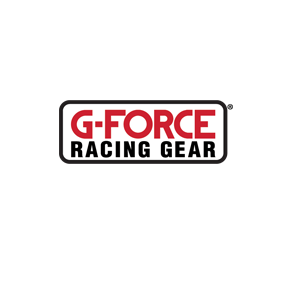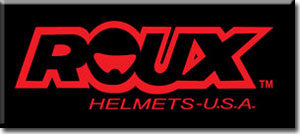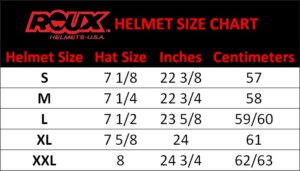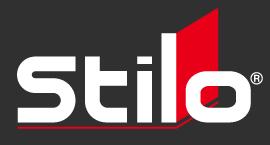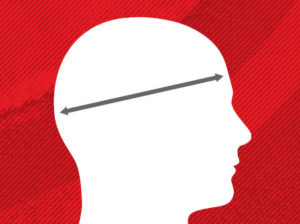 Proper helmet fit is vital to the performance of a helmet during an impact. For the helmet to perform properly during an impact, it must stay securely on the head. Measuring the head is only a starting point for the entire sizing procedure. Due to varying shapes, heads that are apparently the same size when measured by a tape may not necessarily fit the same size helmet. A small metal tape measure or a cloth tape may be used to make your initial measurement. You can also use a string, which can then be laid against a measuring tape. Measure the circumference of the head at a point approximately one inch above the eyebrows in front, and at a point in the back of the head that results in the largest possible measurement. Take several measurements. The largest measurement is the one you want to use.
Proper helmet fit is vital to the performance of a helmet during an impact. For the helmet to perform properly during an impact, it must stay securely on the head. Measuring the head is only a starting point for the entire sizing procedure. Due to varying shapes, heads that are apparently the same size when measured by a tape may not necessarily fit the same size helmet. A small metal tape measure or a cloth tape may be used to make your initial measurement. You can also use a string, which can then be laid against a measuring tape. Measure the circumference of the head at a point approximately one inch above the eyebrows in front, and at a point in the back of the head that results in the largest possible measurement. Take several measurements. The largest measurement is the one you want to use.
THE HELMET SHOULD FIT AS SNUG AS POSSIBLE – IT WILL BREAK IN AS YOU WEAR IT.
Please scroll to the bottom of this page to read about HOW TO FIT A RACING HELMET PROPERLY
SIZING CHARTS ARE GUIDELINES AND NOT 100% GUARANTEE OF FIT – WE HIGHLY RECOMMEND TRYING RACING HELMETS AT YOUR LOCAL SHOP OR DEALER. KEEP IN MIND THAT A MEDIUM IN ONE SIZE RACING HELMET MAY FIT DIFFERENT THAN A MEDIUM IN ANOTHER BRAND SO CHECK SIZE CHARTS WHEN CONSIDERING SIZES.
XS = 53-54 cm
S = 55-56 cm
M = 57-58 cm
L = 59-60 cm
XL = 61-62 cm
XXL = 63-64 cm
| Standard Size | Hat Size | Inches | Centimeters |
|---|---|---|---|
| 4XS | 6 3/8 | 20 1/16 | 51 |
| 3XS | 6 1/2 – 6 5/8 | 20 1/2 – 20 7/8 | 52-53 |
| 2XS | 6 3/4 – 6 7/8 | 21 1/4 – 21 5/8 | 54-55 |
| XS | 7 | 22 | 56 |
| S | 7 1/8 | 22 3/8 | 57 |
| M | 7 1/4 – 7 3/8 | 22 3/4 – 23 1/4 | 58-59 |
| L | 7 1/2 | 23 5/8 | 60 |
| XL | 7 5/8 – 7 3/4 | 24 – 24 3/8 | 61-62 |
| 2XL | 7 7/8 – 8 | 24 3/4 – 25 1/4 | 63-64 |
| 3XL | 8 1/8 – 8 1/4 | 25 5/8 – 26 | 65-66 |
| 4XL | 8 3/8 – 8 1/2 | 26 3/8 – 26 3/4 | 67-68 |
| helmet | size | measurement | metric |
| xsmall | 6-5/8 to 6-3/4 | 20-7/8 to 21-1/4 | 53 to 54 |
| small | 6-7/8 to 7 | 21-5/8 to 22 | 55 to 56 |
| medium | 7-1/8 to 7-1/4 | 22-3/8 to 22-3/4 | 57 to 58 |
| large | 7-3/8 to 7-1/2 | 23-1/8 to 23-1/2 | 59 to 60 |
| xlarge | 7-5/8 to 7-3/4 | 23-7/8 to 24-1/4 | 61 to 62 |
| xxlarge | 7-7/8 to 8 | 24-3/4 to 25-1/8 | 63 to 64 |
AR-10 III
| SIZE | CENTIMETER | HAT SIZE | INCHES |
|---|---|---|---|
| XS | 54-55 | 6 3/4 – 6 7/8 | 21 1/4 – 21 5/8 |
| S | 56-57 | 7 – 7 1/8 | 22 – 22 1/2 |
| M | 58-59 | 7 1/4 – 7 3/8 | 22 7/8 – 23 1/4 |
| L | 60-61 | 7 1/2 – 7 5/8 | 23 5/8 – 24 |
| XL | 62-63 | 7 3/4 – 7 7/8 | 24 3/8 – 24 3/4 |
| XXL | 64-65 | 8 – 8 1/8 | 25 1/4 – 25 5/8 |
Others
| SIZE | CENTIMETER | HAT SIZE | INCHES |
|---|---|---|---|
| XS | 53-54 | 6 5/8 – 6 3/4 | 20 7/8 – 21 1/4 |
| S | 55-56 | 6 7/8 – 7 | 21 5/8 – 22 |
| M | 57-58 | 7 1/8 – 7 1/4 | 22 1/2 – 22 7/8 |
| L | 59-62 | 7 3/8 – 7 1/2 | 23 1/4 – 23 5/8 |
| XL | 61-62 | 7 5/8 – 7 3/4 | 24 – 24 3/8 |
| XXL | 63-64 | 7 7/8 – 8 | 24 3/4 – 25 1/4 |
S = 55 cm
M = 57 cm
L = 59 cm
XL = 61 cm
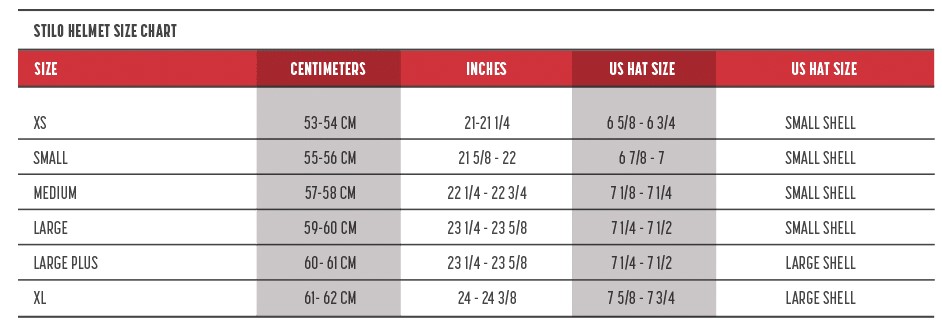
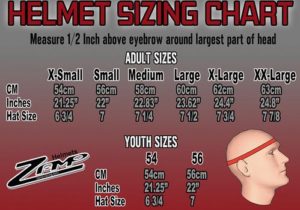
HELMET CARE:
Exterior: Clean with any high quality product used for the care of automotive finishes.
Interior: Clean with a cloth or sponge soaked in mild soap and water and air dry.
Do not use solvents or any petroleum based cleaners, as they will damage the helmet’s energy absorbing liner. Do not attempt to force dry your helmet with excessive heat. Temperatures in excess of 150 degrees Fahrenheit can cause damage.
HOW TO FIT A RACING HELMET PROPERLY:
There are five key steps in determining proper racing helmet fit:
1. Measurement
2. Try on
3. Horizontal and movement check
4. Retention check
5. Pressure point check
1. MEASUREMENT. Measuring the head is a starting point for the entire sizing procedure. Due to varying shapes heads that are apparently the same size when measured by a tape may not necessarily fit the same racing helmet size. The circumference of the head should be measured at a point approximately one inch above the eyebrows in front and at a point in the back of the head that results in the largest possible measurement. Take several measurements to make sure you have the largest one.
2. TRY ON. Once you have determined your preliminary tape measurement, try on a racing helmet. Select the racing helmet that is closest in hat size to the tape measurement. If it is between sizes, round up to the next largest one. If you are not familiar with racing helmets, here are instructions for putting one on. A) Grasp the racing helmet by the chin straps, with the front of the racing helmet facing you and the top of the racing helmet facing down. B) Place the thumbs on the inside surface of the straps and balance the racing helmet with the index fingers. C) Spread the racing helmet apart with the hands, and slip down over the head. If the racing helmet slides down on the head with no resistance, you have your first indication that it may be too large. Obviously, if it will not slide down over the head at all, it is too small. Many people unfamiliar with racing helmets are reluctant to pull down if they meet resistance as the racing helmet goes on. A trained eye can tell if it is really too small, or just snug going on, and you should encourage the effort to get the racing helmet on. Only if the racing helmet is impossible to put on should you move up to the next size, as racing helmets that go on snug generally fit very well once all the way on. Remember, most people will select a racing helmet that is too large for them if left to make their own choice. The eyes should be approximately in the center of the eyeport with the top edge of the liner padding just above the eyebrows.
3. CHECKING HORIZONTAL AND VERTICAL MOVEMENT. Now that you are wearing the racing helmet, look carefully at the way it fits. Check to see if the cheek pads are in contact with the cheeks. Is there excess pressure on the cheeks? Look for gaps between the temples and the browpad. Check the back of the racing helmet where the neckroll (if the racing helmet has one) makes contact with the neck. Does it touch at all? Or is it pushing the racing helmet away at the rear, causing it to roll down over the eyes in front? After you have made your visual check, grab the racing helmet in your hands-one on either side- and try to rotate the racing helmet from side to side. Note any movement of the skin while doing this, as well as the amount of resistance to movement. If necessary, remember to hold your head steady. Next, check movement up and down, again, noting skin movement and resistance. If in either test there was little or no skin movement, and/or the racing helmet moved very easily, the helmet is too large. A properly fitted racing helmet will cause the skin to move as the racing helmet moves. And, it will feel to the wearer as if evenly distributed pressure is being continuously exerted around the head. NOTE: Racing Helmets are a little like shoes, in that they do break-in a little. For this reason, the best attitude to have when fitting is that the racing helmet should be as tight as the customer can stand to wear it.
4. RETENTION CHECK. Now fasten the chin strap, so you can check it. After the strap has been tightly fastened, hold your head steady, warning that this test may be a little uncomfortable, but that it is very important. Reach over the top of the racing helmet, grabbing the bottom edge with your fingers. Then try to roll the racing helmet off the head. If it comes off, it is undoubtedly too large. WARNING: Do not keep a racing helmet that can be rolled off the head with the strap fastened.
5. PRESSURE POINT CHECK. Finally, unfasten the chin strap and remove the racing helmet. Immediately after the racing helmet has been removed, observe coloration of the skin on the forehead and cheeks. A reddening of the skin in a small area may indicate a pressure point. Pressure points sometimes are not noticed by the wearer for several minutes, or even hours later. They sometimes cause headaches, and are at the least, uncomfortable. If you notice a pressure point, did you have discomfort there while wearing the racing helmet? If you cannot remember, put the racing helmet back on for a few minutes, paying particular attention to the anticipated pressure point. If you experience pressure point discomfort either time, go to the next larger size, repeating steps four and five. CONFIRM PROPER FIT. One way to compare this evaluation of proper fit is to try on racing helmets that are one size larger and one size smaller than the one you think is right. Keep in mind some people gravitate toward larger sizes. Call 866-505-2739 for assistance.
Source: BELLracing.com
REMEMBER: SIZING CHARTS ARE GUIDELINES AND NOT 100% GUARANTEE OF FIT – WE HIGHLY RECOMMEND TRYING RACING HELMETS AT YOUR LOCAL SHOP OR DEALER. KEEP IN MIND THAT A MEDIUM IN ONE SIZE RACING HELMET MAY FIT DIFFERENT THAN A MEDIUM IN ANOTHER BRAND SO CHECK SIZE CHARTS WHEN CONSIDERING SIZES.
WE OFFER A FREE EXCHANGE PROGRAM ON UNUSED RACING HELMETS WITHIN 10 DAYS – NO RESTOCK FEE, CUSTOMER PAYS FOR SHIPPING CHARGES AND HELMET PRICE DIFFERENCE (WHERE APPLICABLE).

